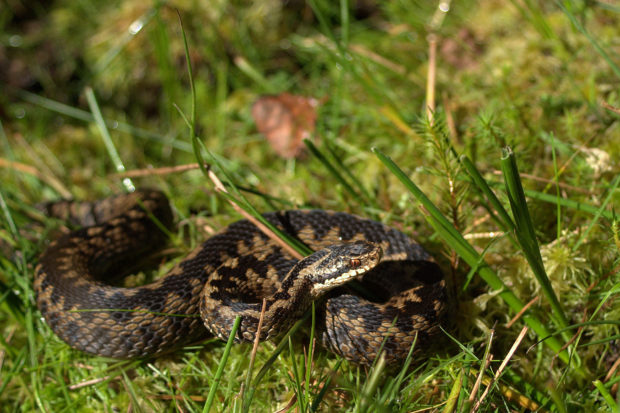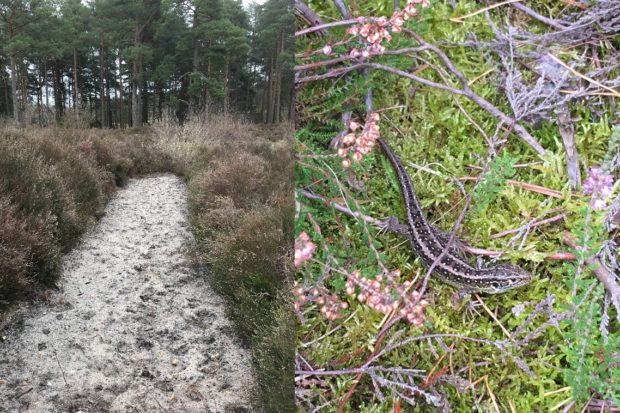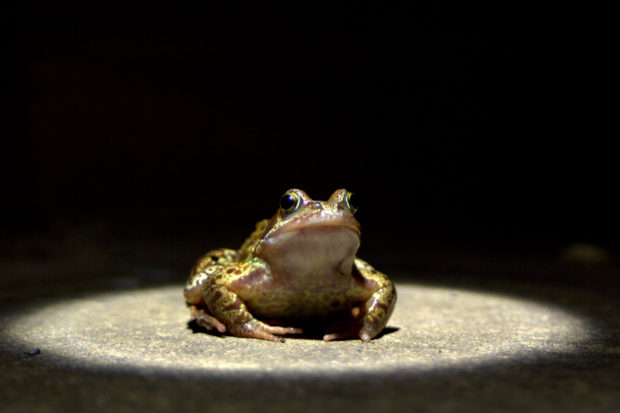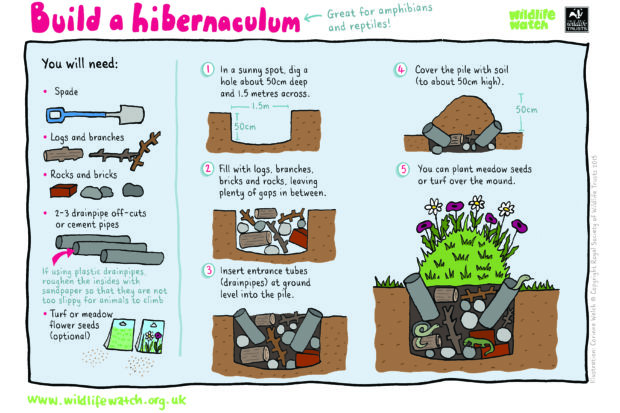Hibernating Herpetofauna
In Britain there are many species that spend the winter curled up under cover, evading the freezing frosts and occasional snowy showers (or storms!). Alongside bats, hedgehogs, dormice and bumblebees, all of our amphibian and reptile species hibernate – and with the sunny weather in rapid decline, they will be returning to their favourite slumber spots soon.
As I talked about earlier in the year, the Thames Basin Heaths provide a fantastic habitat for all six of our native reptiles species (and for many of our amphibians as well), with perfect spots for basking, breeding and feeding. And whilst it is incredibly important to keep the heaths in good condition for active reptiles, it is just as important (if not more so) to protect their hibernacula. A hibernacula is essentially a place where reptiles and amphibians go to hibernate, which must be resistant to the worst of the weather and predators. For snakes, old mammal burrow networks can be perfect places, as well as large piles of decaying debris, and tree root systems with nooks and crannies. The hibernacula must also have good drainage so they tend to be found on drier slopes and raised area across the heaths.

Adders will be returning to their hibernacula sites soon
Adders often use the same hibernacula for their entire lives, with their offspring also returning to the same sites as their parents. And with national declines amongst many adder populations, their hibernacula are vital for the continuing future of the species. Our three native lizards have a slightly different approach when picking a hibernation spot, and we still aren’t too sure what common lizards do! Slow worms and common lizards can be found nestled in frost free sections of wood piles, under rocks, with slow worms sometimes even over-wintering in ant nests. Which is pretty perfect if they get a bit peckish on a warmer winters day. Sand lizards take their sleeping arrangements into their own…claws… and actually dig burrows in sandy soils on the heaths. The burrows usually have a diameter of around 5cm and can be as deep as a metre! They dig a bend into the burrow so that they aren’t visible from the entrance, keeping out of sight of predators.

Sandy soils for sand lizard hibernation burrows
Frogs, toads and newts hibernate under wood piles, rocks or any debris that keeps them slightly off freezing! In milder weather they will actually wake up and top up their fat reserves with a bit of snacking, so don’t be too concerned if you see any out and about over winter. Adders have also been known to come out and bask if there are particularly sunny spells, they have even been spotted out on top of snow! Even if you don’t have a pond, amphibians might be using your garden to hibernate, particularly if you have any dead wood, compost heaps or even just an overgrown patch! They can even be found under plant pots.

A common frog experiencing an extra terrestrial visit

Why not build your own? A fantastic guide from the Wildlife Trust (linked below)
It is super easy to make your own hibernacula for garden amphibians (and if you are lucky slow worms and grass snakes), and all you really need to do is just set aside a small area in a quiet sunny patch. Here is a fantastic guide from the Wildlife Trust, you can also place old carpet, or similar, over a section of compost heap. And if possible, leave a section of compost heap that you only ever add to and don’t take away from. If left undisturbed, as well as being a good hibernation spot, compost heaps can be breeding sites for grass snakes and popular summer hangouts for slow worms (who will love munching away at your local slug population).
So why not leave a wild patch in the garden and see what turns up!
Warden Jamie
